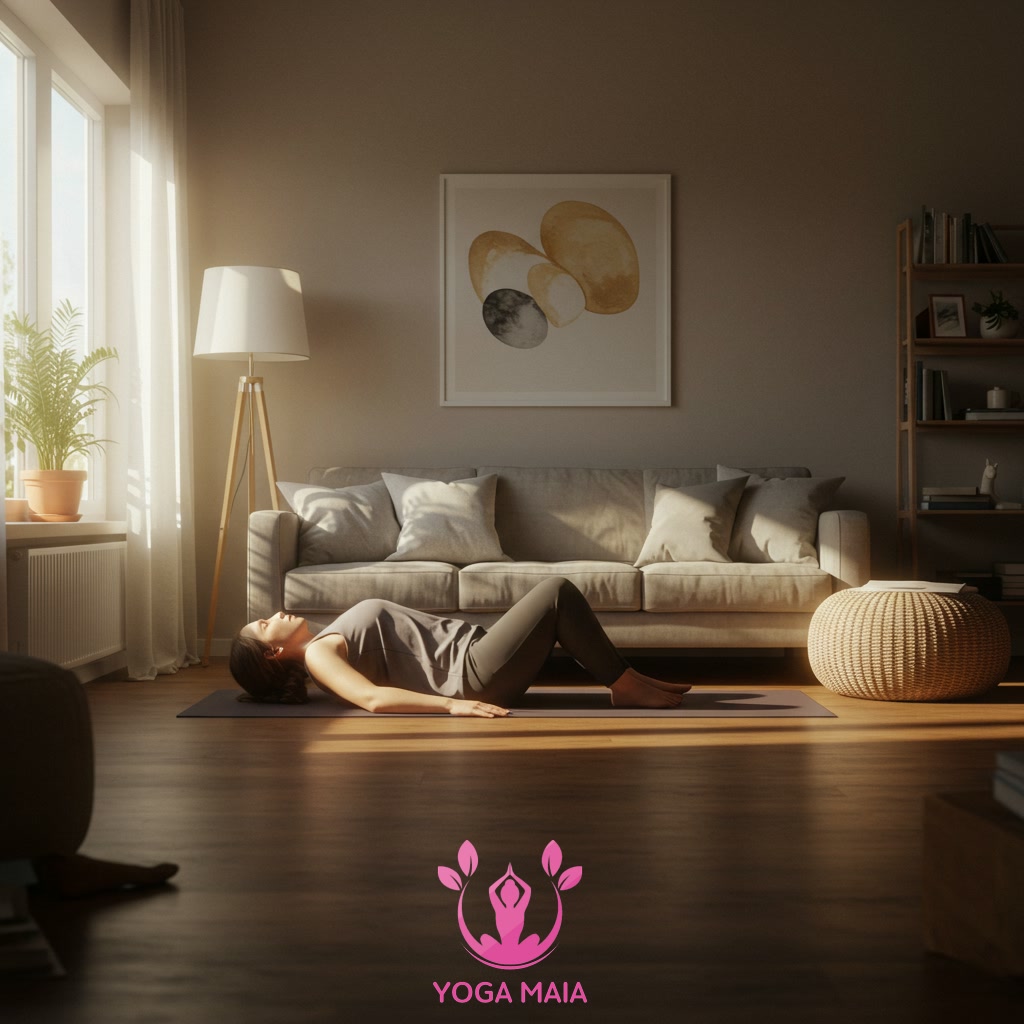Yoga Blog
Experience Profound Relaxation: Yoga Nidra for Deep Rest and Rejuvenation
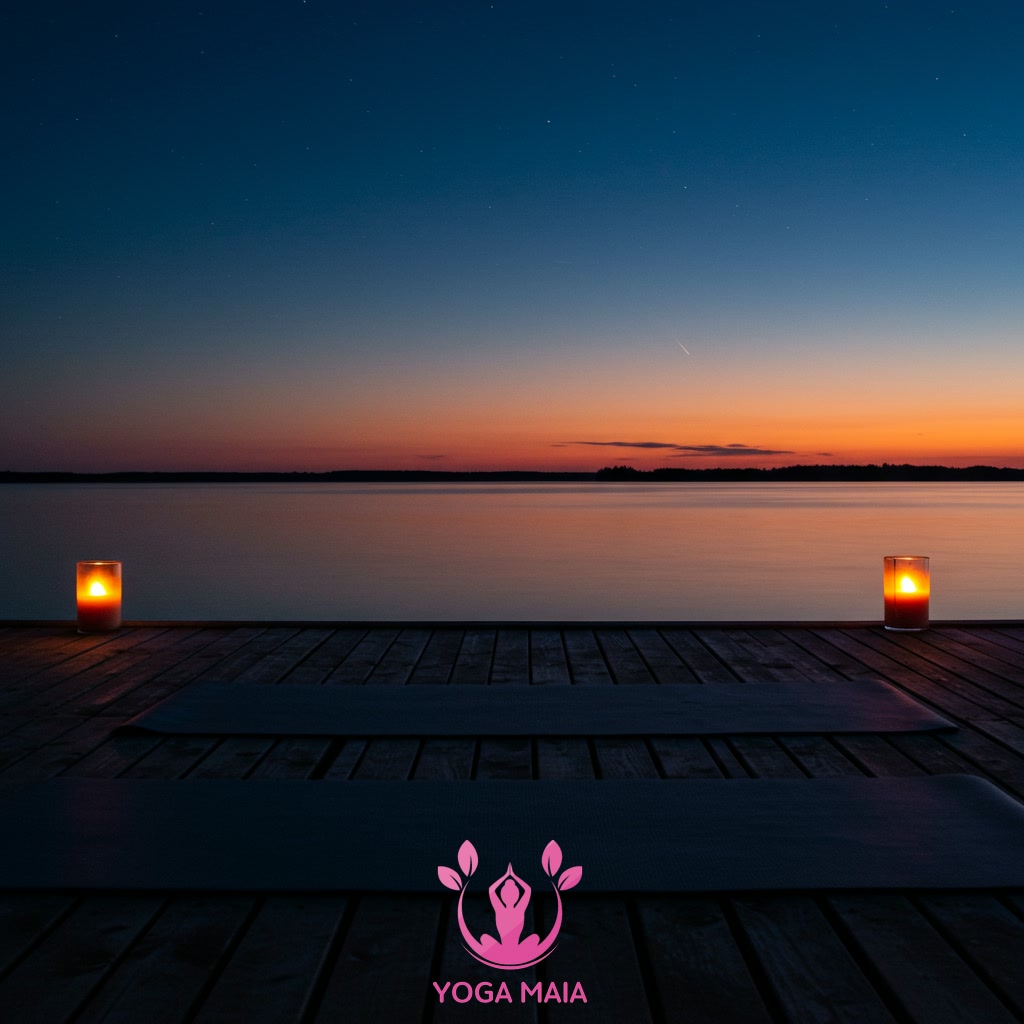
Yoga Nidra offers a path to experience profound relaxation and achieve deep rest. This practice, a form of yoga, guides individuals into a state of conscious deep sleep. Engaging in Yoga Nidra promotes significant physical, mental, and emotional rejuvenation. It is a powerful technique for unwinding and restoring energy.
Table of Contents
- Section 1: Introduction to Yoga Nidra: The State of Conscious Deep Relaxation
- Section 2: Understanding the Benefits: Deep Rest, Rejuvenation, and Stress Reduction
- Section 3: Preparing for Your Yoga Nidra Practice
- Section 4: The Stages of Yoga Nidra: Guiding You Towards Profound Relaxation
- Section 5: Integrating Yoga Nidra for Daily Well-being
Section 1: Introduction to Yoga Nidra: The State of Conscious Deep Relaxation
Yoga Nidra, often referred to as ‘yogic sleep’, is a powerful state of consciousness that transcends ordinary waking, dreaming, and sleeping. It is not literal sleep, but rather a state of deep relaxation while remaining fully aware. In this practice, you are guided to systematically relax your physical body, quiet your mind, and enter a profound state of receptive stillness. This conscious journey into deep rest allows your entire being to unwind and recharge, creating a unique space for healing and integration without losing awareness. It is this delicate balance of deep rest and conscious presence that defines the transformative experience of Yoga Nidra.
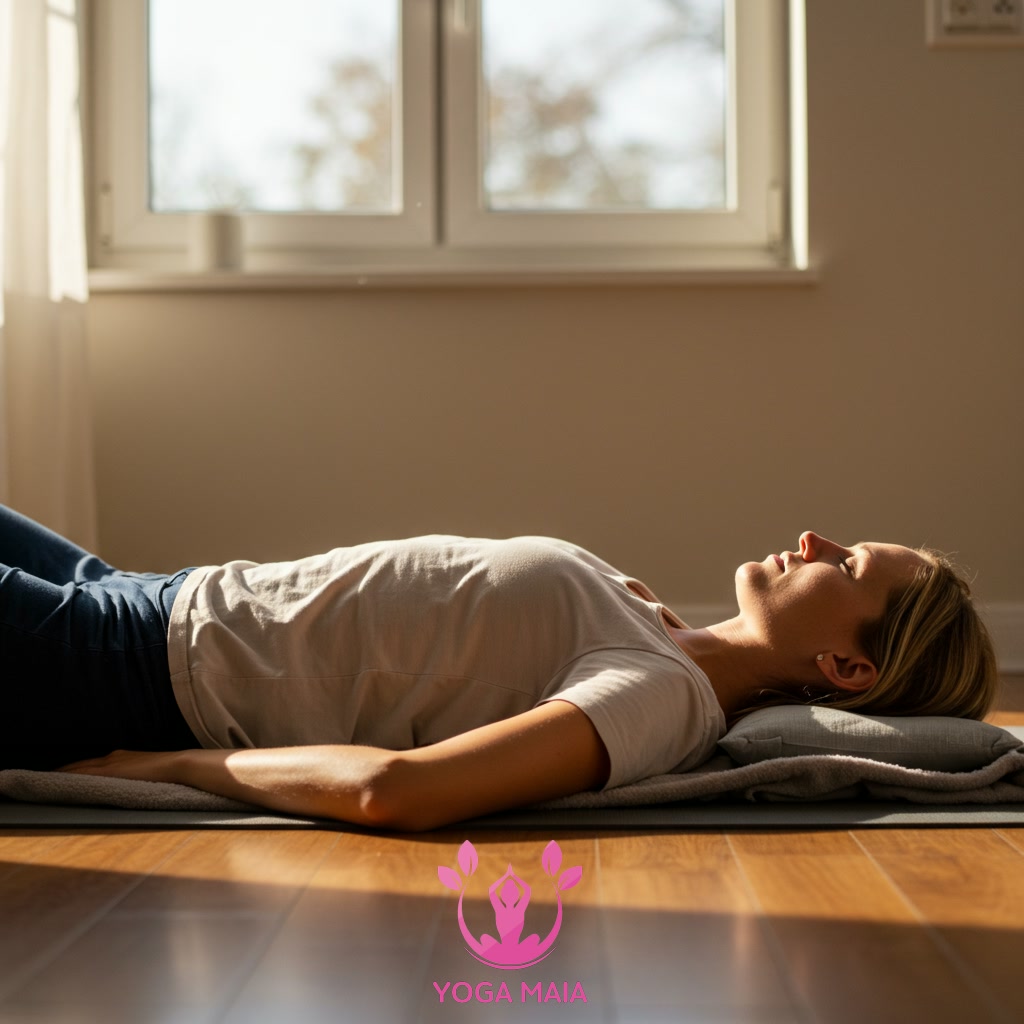
Section 2: Understanding the Benefits: Deep Rest, Rejuvenation, and Stress Reduction
Engaging in the practice of Yoga Nidra unlocks a profound state of conscious deep relaxation, moving beyond ordinary sleep to access deeper levels of rest. This unique state allows the body and mind to enter a powerful mode of recovery, significantly contributing to deep rest and overall rejuvenation. By consciously relaxing, the parasympathetic nervous system is activated, counteracting the ‘fight or flight’ response and effectively melting away accumulated tension. This physiological shift is key to stress reduction, promoting a sense of calm and mental clarity. Regular practice helps to release physical and emotional blockages, restoring vitality and leaving you feeling refreshed, centered, and deeply renewed.
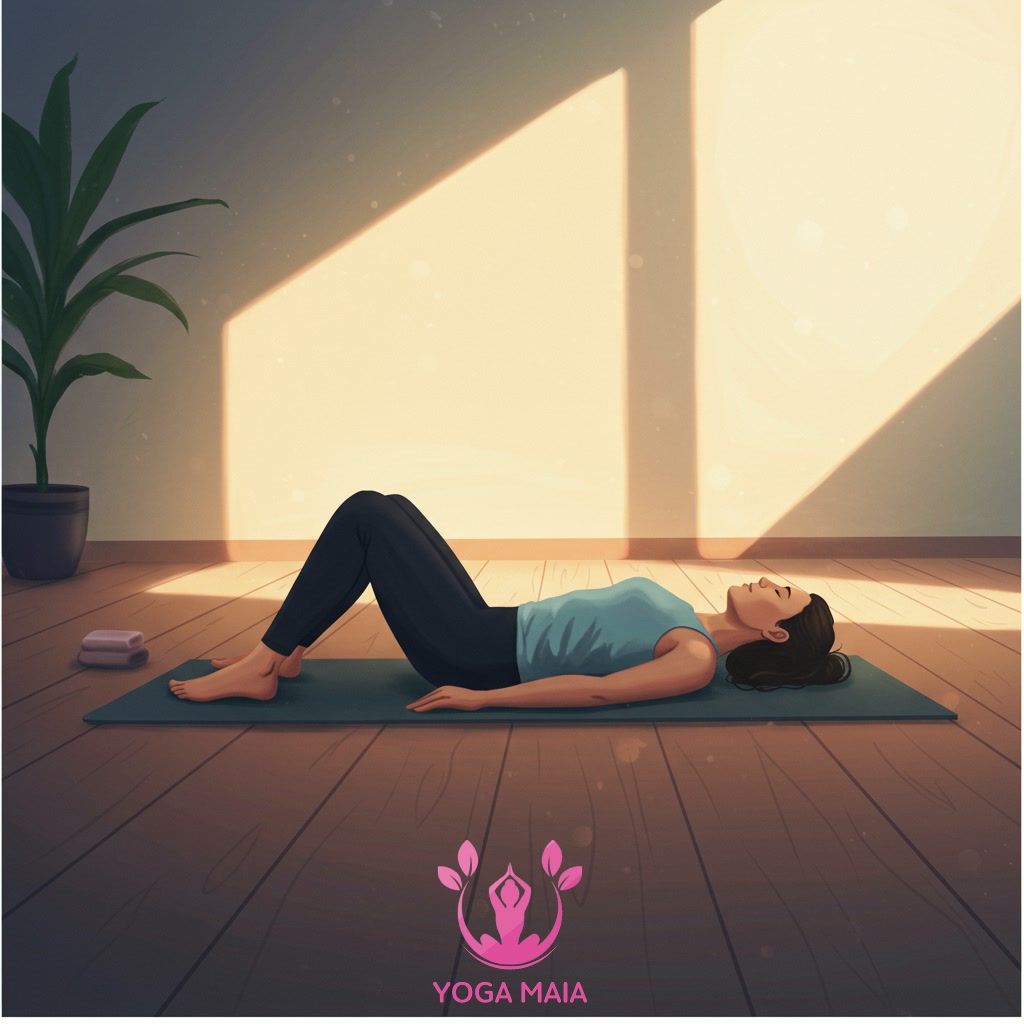
Section 3: Preparing for Your Yoga Nidra Practice
Following the understanding of how Yoga Nidra facilitates deep rest, the next step is to ensure you are properly prepared to receive its full benefits. Preparation is simple but crucial. Find a quiet, comfortable space where you will not be disturbed for the duration of the practice, typically 20-45 minutes. It’s essential to lie down on your back, ideally on a yoga mat or a soft surface, using cushions or bolsters under your knees and head for support to ensure complete comfort and relaxation throughout the body. Cover yourself with a light blanket, as body temperature can drop during deep relaxation. Wear loose, comfortable clothing that doesn’t restrict movement or circulation. Turn off notifications on electronic devices. This dedicated preparation sets the stage for consciously entering the state of profound relaxation that Yoga Nidra offers.
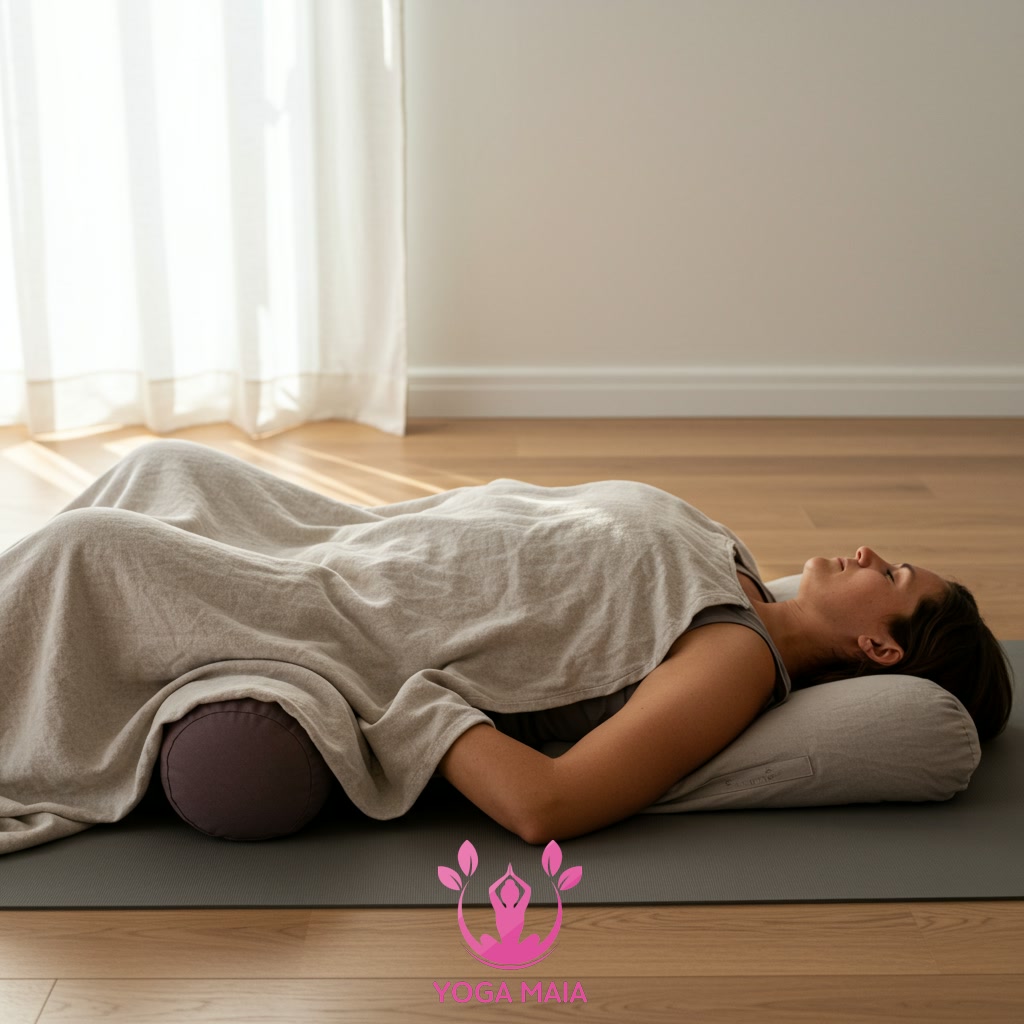
Section 4: The Stages of Yoga Nidra: Guiding You Towards Profound Relaxation
Following the understanding of how Yoga Nidra facilitates deep rest and ensuring you are properly prepared, the practice itself unfolds through a series of distinct stages designed to systematically guide you into a state of profound relaxation. After settling into your comfortable position, the journey begins with internalizing your senses and setting a Sankalpa, a personal heartfelt resolve. You are then led through a systematic rotation of consciousness through various parts of the body, enhancing self-awareness without physical movement. This is typically followed by focusing on the breath, experiencing pairs of opposite sensations or feelings, and engaging in guided visualizations. Each stage gently deepens your state of relaxation while a thread of conscious awareness is maintained, leading to a state of deep rest and rejuvenation before you are gently guided back to external awareness.
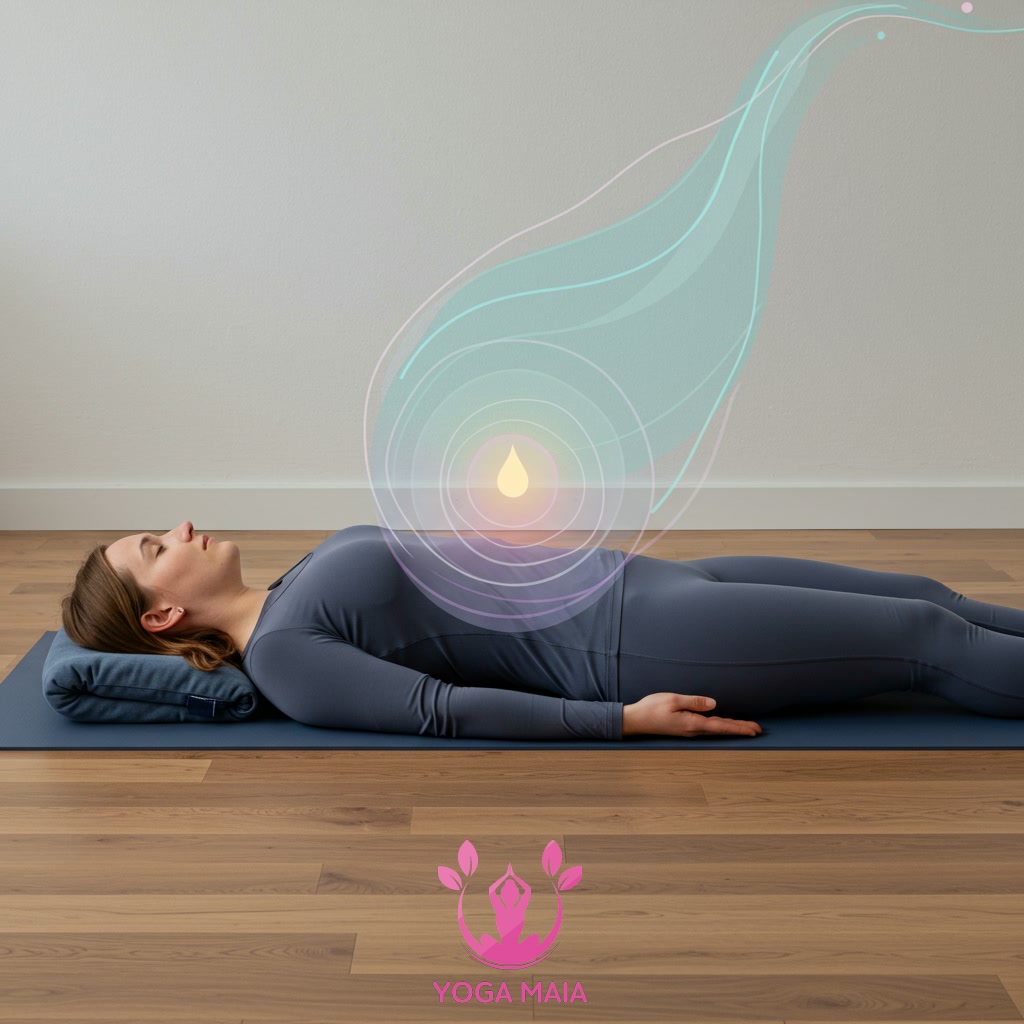
Section 5: Integrating Yoga Nidra for Daily Well-being
Incorporating Yoga Nidra into your daily or weekly routine can significantly enhance overall well-being. While understanding the practice’s stages is essential, the real transformation comes through consistent application. Consider dedicating a specific time each day, perhaps in the morning to set a calm tone or in the evening to unwind before sleep, for a session. Even short, guided practices can be beneficial. This regular integration helps build resilience against stress, improves sleep quality, and cultivates a deeper connection with your inner state. Making Yoga Nidra a non-negotiable part of your self-care regimen allows you to harness its profound restorative power consistently, moving beyond occasional relaxation to sustained rejuvenation.
